-
 bitcoin
bitcoin $122288.232522 USD
0.16% -
 ethereum
ethereum $4480.662914 USD
-0.22% -
 xrp
xrp $2.962747 USD
-2.32% -
 tether
tether $1.000120 USD
-0.05% -
 bnb
bnb $1145.654223 USD
-2.07% -
 solana
solana $227.105217 USD
-1.67% -
 usd-coin
usd-coin $0.999548 USD
-0.02% -
 dogecoin
dogecoin $0.250875 USD
-2.04% -
 tron
tron $0.340654 USD
-0.49% -
 cardano
cardano $0.837968 USD
-2.52% -
 hyperliquid
hyperliquid $48.960449 USD
0.06% -
 chainlink
chainlink $22.049280 USD
-1.33% -
 ethena-usde
ethena-usde $1.000404 USD
0.02% -
 sui
sui $3.586212 USD
0.20% -
 avalanche
avalanche $29.894916 USD
-4.18%
How to use MA moving average combined with MACD? Dual indicator resonance technique
Using MA and MACD together in crypto trading enhances decision-making by identifying strong bullish and bearish signals through dual indicator resonance.
May 22, 2025 at 05:49 am
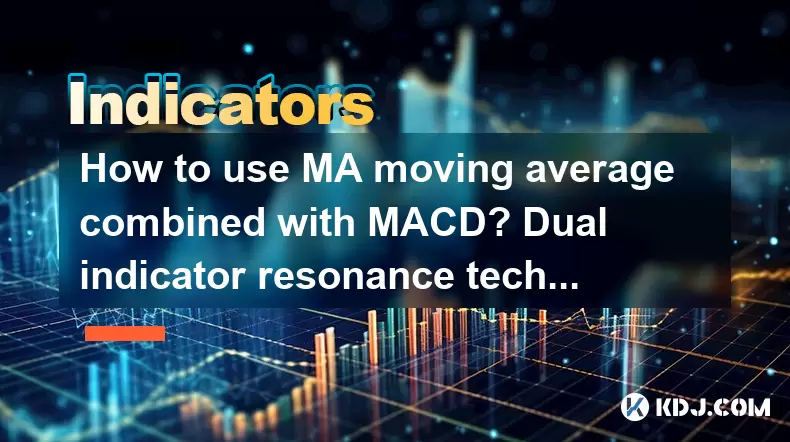
Using the Moving Average (MA) and the Moving Average Convergence Divergence (MACD) together is a powerful strategy for traders looking to enhance their decision-making process in the cryptocurrency market. This dual indicator resonance technique combines the strengths of both indicators to provide more robust trading signals. Here's a detailed guide on how to effectively use MA and MACD together.
Understanding Moving Averages (MA)
Moving Averages are one of the most commonly used technical indicators in trading. They help smooth out price data to identify the direction of the trend. There are two main types of MAs: Simple Moving Average (SMA) and Exponential Moving Average (EMA).
- SMA calculates the average of a selected range of prices, usually closing prices, over a specific number of periods.
- EMA gives more weight to recent prices, making it more responsive to new information.
For this strategy, we will focus on using the 20-day EMA and the 50-day EMA as they are widely used in the crypto market to identify short-term and medium-term trends, respectively.
Understanding MACD
Moving Average Convergence Divergence (MACD) is a trend-following momentum indicator that shows the relationship between two moving averages of a security’s price. The MACD is calculated by subtracting the 26-period EMA from the 12-period EMA. The result of this calculation is the MACD line. A 9-day EMA of the MACD line, called the 'signal line,' is then plotted on top of the MACD line, which can function as a trigger for buy and sell signals.
Setting Up Your Charts
To implement the dual indicator resonance technique, you need to set up your trading charts correctly. Here’s how to do it:
- Open your trading platform and select the cryptocurrency pair you want to trade.
- Add the 20-day EMA to your chart. This will help you identify short-term trends.
- Add the 50-day EMA to your chart. This will help you identify medium-term trends.
- Add the MACD indicator to your chart. Ensure that the settings are the standard 12, 26, 9.
Identifying Entry and Exit Points
The key to using MA and MACD together is to look for resonance between the signals from both indicators. Here’s how to identify potential entry and exit points:
- Bullish Signal: Look for the 20-day EMA to cross above the 50-day EMA. This indicates a potential upward trend. At the same time, check the MACD line to see if it crosses above the signal line. If both conditions are met, it’s a strong bullish signal, and you should consider entering a long position.
- Bearish Signal: Conversely, look for the 20-day EMA to cross below the 50-day EMA. This indicates a potential downward trend. Simultaneously, check if the MACD line crosses below the signal line. If both conditions are met, it’s a strong bearish signal, and you should consider entering a short position.
Fine-Tuning Your Strategy
To further refine your trading strategy, consider the following additional factors:
- Volume: Look at the trading volume to confirm the strength of the trend. High volume during a bullish or bearish signal can indicate a strong trend.
- Divergence: Pay attention to any divergence between the price and the MACD. If the price is making new highs but the MACD is not, it could be a sign of weakening momentum, and vice versa.
- Overbought/Oversold Conditions: Use other indicators like the Relative Strength Index (RSI) to identify overbought or oversold conditions. This can help you avoid entering trades at potentially unsustainable price levels.
Practical Example
Let’s walk through a practical example to see how this strategy works in real-time:
- Scenario: You are looking at the Bitcoin/USD chart.
- Observation: The 20-day EMA crosses above the 50-day EMA, indicating a potential bullish trend.
- Confirmation: At the same time, the MACD line crosses above the signal line, confirming the bullish signal.
- Action: You decide to enter a long position on Bitcoin/USD.
- Exit Strategy: You monitor the chart and notice that the 20-day EMA crosses below the 50-day EMA, and the MACD line crosses below the signal line. This indicates a potential bearish trend, and you decide to exit your long position.
Risk Management
While the dual indicator resonance technique can provide strong trading signals, it’s crucial to incorporate risk management into your strategy:
- Stop-Loss Orders: Always set a stop-loss order to limit potential losses. For example, if you enter a long position on Bitcoin/USD at $30,000, you might set a stop-loss order at $29,000 to limit your loss to $1,000 per Bitcoin.
- Position Sizing: Determine the size of your position based on your risk tolerance. Never risk more than a small percentage of your trading capital on a single trade.
- Diversification: Consider diversifying your trades across different cryptocurrencies to spread risk.
Monitoring and Adjusting
Trading is not a set-and-forget activity. You need to continuously monitor your trades and adjust your strategy as market conditions change:
- Regularly Review: Check your charts regularly to see if the trend is still in your favor.
- Adjust Stop-Loss: As the price moves in your favor, consider adjusting your stop-loss order to lock in profits.
- Stay Informed: Keep up with market news and events that could impact cryptocurrency prices.
Frequently Asked Questions
Q1: Can this strategy be used for all timeframes?Yes, the dual indicator resonance technique can be used on various timeframes, from short-term intraday charts to longer-term daily or weekly charts. However, the effectiveness may vary depending on the volatility and liquidity of the market you are trading.
Q2: Is it necessary to use both EMA and SMA for this strategy?No, it is not necessary to use both EMA and SMA. For this strategy, we focus on using EMAs because they are more responsive to recent price changes, which is beneficial for identifying trends in the fast-moving cryptocurrency market.
Q3: How do I handle false signals?False signals are a common challenge in trading. To mitigate them, always look for confirmation from other indicators or market conditions. Additionally, use proper risk management techniques, such as setting stop-loss orders, to minimize the impact of false signals on your trading account.
Q4: Can this strategy be automated?Yes, this strategy can be automated using trading bots or algorithmic trading platforms. However, it’s important to thoroughly backtest your strategy on historical data and continuously monitor its performance, as market conditions can change, affecting the effectiveness of the strategy.
Disclaimer:info@kdj.com
The information provided is not trading advice. kdj.com does not assume any responsibility for any investments made based on the information provided in this article. Cryptocurrencies are highly volatile and it is highly recommended that you invest with caution after thorough research!
If you believe that the content used on this website infringes your copyright, please contact us immediately (info@kdj.com) and we will delete it promptly.
- BlockDAG, DOGE, HYPE Sponsorship: Crypto Trends Shaping 2025
- 2025-10-01 00:25:13
- Deutsche Börse and Circle: A StableCoin Adoption Powerhouse in Europe
- 2025-10-01 00:25:13
- BlockDAG's Presale Buzz: Is It the Crypto to Watch in October 2025?
- 2025-10-01 00:30:13
- Bitcoin, Crypto, and IQ: When Genius Meets Digital Gold?
- 2025-10-01 00:30:13
- Stablecoins, American Innovation, and Wallet Tokens: The Next Frontier
- 2025-10-01 00:35:12
- NBU, Coins, and Crypto in Ukraine: A New Yorker's Take
- 2025-10-01 00:45:14
Related knowledge
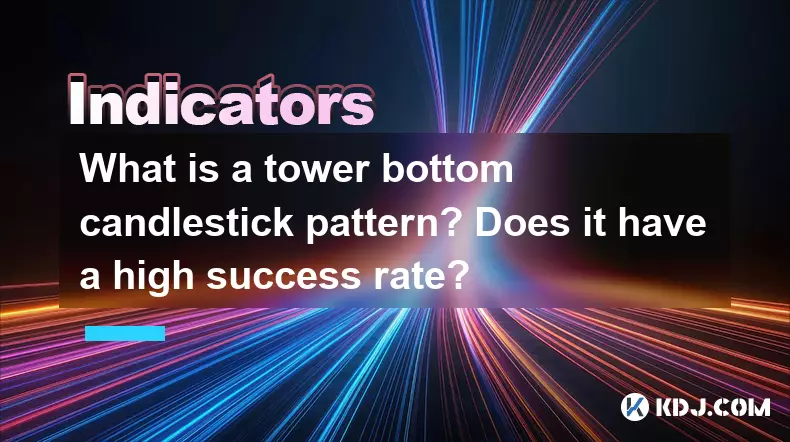
What is a tower bottom candlestick pattern? Does it have a high success rate?
Sep 22,2025 at 07:18am
Tower Bottom Candlestick Pattern Explained1. The tower bottom candlestick pattern is a reversal formation that typically appears at the end of a downt...
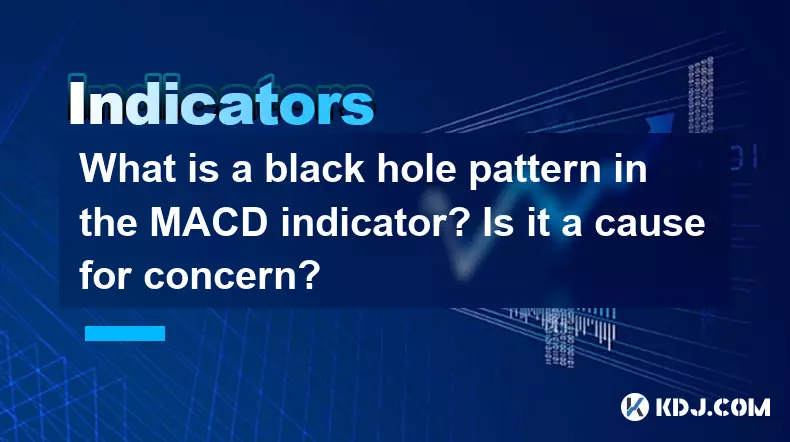
What is a black hole pattern in the MACD indicator? Is it a cause for concern?
Sep 21,2025 at 06:54pm
Bitcoin's Role in Decentralized Finance1. Bitcoin remains the cornerstone of decentralized finance, serving as a benchmark for value and security acro...

How can I use the psychological line (PSY) to determine market sentiment?
Sep 17,2025 at 02:19pm
Understanding the Psychological Line (PSY) in Cryptocurrency TradingThe Psychological Line, commonly referred to as PSY, is a momentum oscillator used...
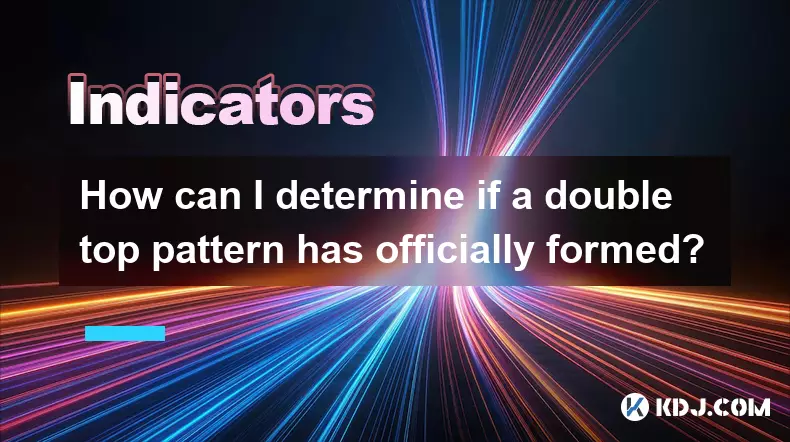
How can I determine if a double top pattern has officially formed?
Sep 21,2025 at 03:18am
Understanding the Structure of a Double Top Pattern1. A double top pattern consists of two distinct peaks that reach approximately the same price leve...
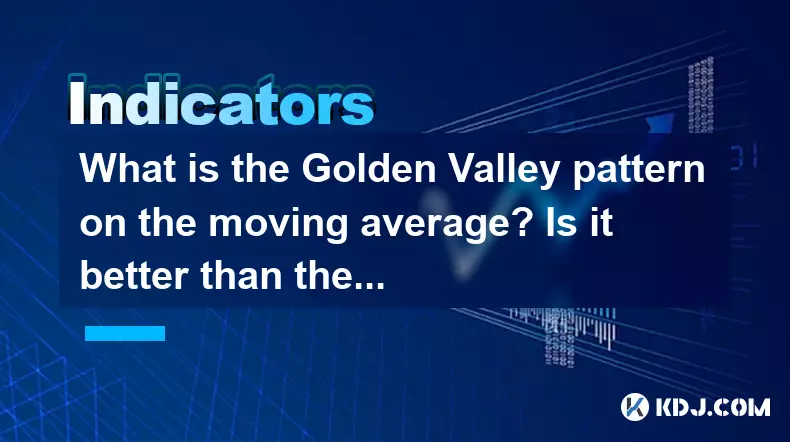
What is the Golden Valley pattern on the moving average? Is it better than the Silver Valley pattern?
Sep 21,2025 at 02:54pm
Understanding the Golden Valley Pattern in Moving Averages1. The Golden Valley pattern is a technical formation observed in cryptocurrency price chart...

What does a death cross of the RSI in the strong zone (above 50) mean?
Sep 17,2025 at 10:54pm
Understanding the Death Cross in RSI Context1. The term 'death cross' is traditionally associated with moving averages, where a short-term average cro...

What is a tower bottom candlestick pattern? Does it have a high success rate?
Sep 22,2025 at 07:18am
Tower Bottom Candlestick Pattern Explained1. The tower bottom candlestick pattern is a reversal formation that typically appears at the end of a downt...

What is a black hole pattern in the MACD indicator? Is it a cause for concern?
Sep 21,2025 at 06:54pm
Bitcoin's Role in Decentralized Finance1. Bitcoin remains the cornerstone of decentralized finance, serving as a benchmark for value and security acro...

How can I use the psychological line (PSY) to determine market sentiment?
Sep 17,2025 at 02:19pm
Understanding the Psychological Line (PSY) in Cryptocurrency TradingThe Psychological Line, commonly referred to as PSY, is a momentum oscillator used...

How can I determine if a double top pattern has officially formed?
Sep 21,2025 at 03:18am
Understanding the Structure of a Double Top Pattern1. A double top pattern consists of two distinct peaks that reach approximately the same price leve...

What is the Golden Valley pattern on the moving average? Is it better than the Silver Valley pattern?
Sep 21,2025 at 02:54pm
Understanding the Golden Valley Pattern in Moving Averages1. The Golden Valley pattern is a technical formation observed in cryptocurrency price chart...

What does a death cross of the RSI in the strong zone (above 50) mean?
Sep 17,2025 at 10:54pm
Understanding the Death Cross in RSI Context1. The term 'death cross' is traditionally associated with moving averages, where a short-term average cro...
See all articles










































































